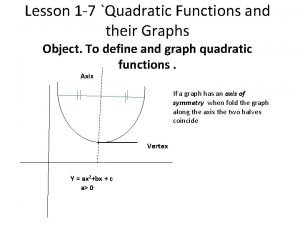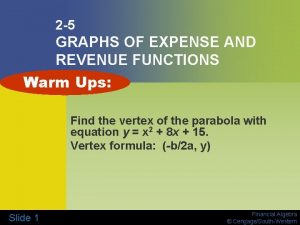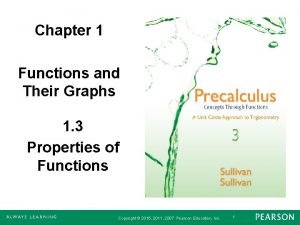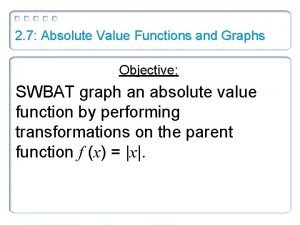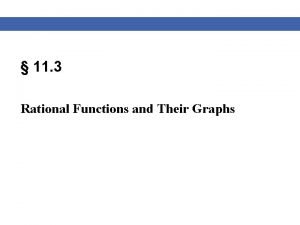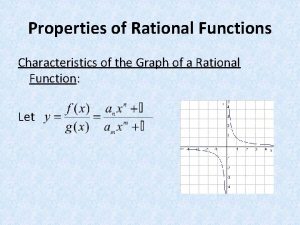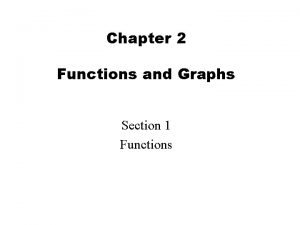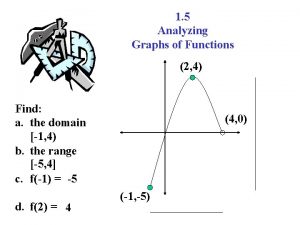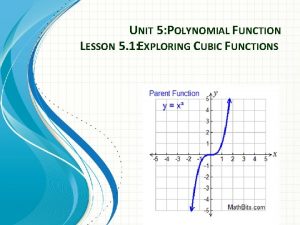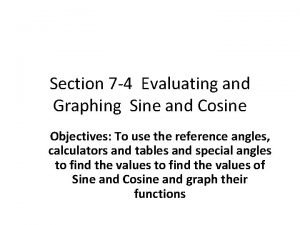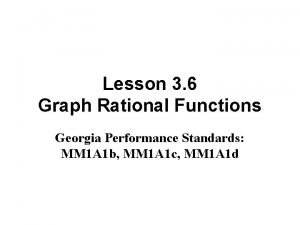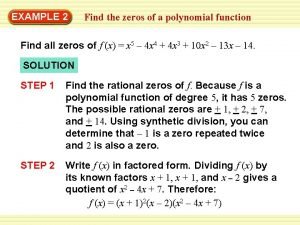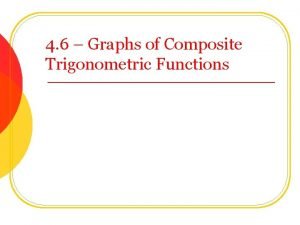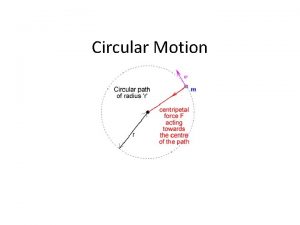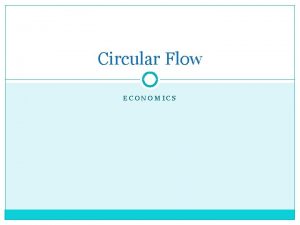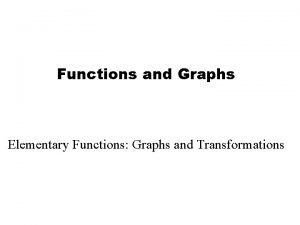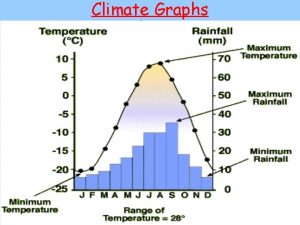4 Graphs of the Circular Functions Copyright 2013



























































- Slides: 59

4 Graphs of the Circular Functions Copyright © 2013, 2009, 2005 Pearson Education, Inc. 1

4 Graphs of the Circular Functions 4. 1 Graphs of the Sine and Cosine Functions 4. 2 Translations of the Graphs of the Sine and Cosine Functions 4. 3 Graphs of the Tangent and Cotangent Functions 4. 4 Graphs of the Secant and Cosecant Functions Copyright © 2013, 2009, 2005 Pearson Education, Inc. 2

4. 1 Graphs of the Sine and Cosine Functions Periodic Functions ▪ Graph of the Sine Function▪ Graph of the Cosine Function ▪ Graphing Techniques, Amplitude, and Period ▪ Using a Trigonometric Model Copyright © 2013, 2009, 2005 Pearson Education, Inc. 3

4. 1 Example 1 Graphing y = a sin x (page 137) and compare to the graph of y = sin x. The shape of the graph is the same as the shape of y = sin x. The range of Copyright © 2013, 2009, 2005 Pearson Education, Inc. is 4

4. 1 Example 2 Graphing y = sin bx (page 138) and compare to the graph of y = sin x. The coefficient of x is , so b = , and the period is Divide the interval into four equal parts to get the x-values that will yield minimum and maximum points and x-intercepts. The endpoints are 0 and the endpoints are , and the three points between Copyright © 2013, 2009, 2005 Pearson Education, Inc. 5

4. 1 Example 2 Graphing y = sin bx (cont. ) The x-values are Copyright © 2013, 2009, 2005 Pearson Education, Inc. 6

4. 1 Example 2 Graphing y = sin bx (cont. ) Copyright © 2013, 2009, 2005 Pearson Education, Inc. 7

4. 1 Example 3 Graphing y = cos bx (page 139) The coefficient of x is , so b = , and the period is Divide the interval into four equal parts to get the x-values that will yield minimum and maximum points and x-intercepts. The x-values are 0, π, 2π, 3π, and 4π. Copyright © 2013, 2009, 2005 Pearson Education, Inc. 8

4. 1 Example 3 Graphing y = cos bx (page 139) Copyright © 2013, 2009, 2005 Pearson Education, Inc. 9

4. 1 Example 4 Graphing y = a sin bx (page 140) Graph y = – 3 sin 2 x. The coefficient of x is 2, so b = 2, and the period is The amplitude is |– 3| = 3. Divide the interval into four equal parts to get the x-values that will yield minimum and maximum points and x-intercepts. Copyright © 2013, 2009, 2005 Pearson Education, Inc. 10

4. 1 Example 4 Graphing y = a sin bx (page 150) Copyright © 2013, 2009, 2005 Pearson Education, Inc. 11

4. 1 Example 5 Graphing y = a cos bx for b Equal to a Multiple of π (page 141) The coefficient of x is , so b = , and the period is The amplitude is |2| = 2. Divide the interval [0, 4] into four equal parts to get the x-values that will yield minimum and maximum points and x-intercepts. The x-values are 0, 1, 2, 3, and 4. Copyright © 2013, 2009, 2005 Pearson Education, Inc. 12

4. 1 Example 5 Graphing y = a cos bx for b Equal to a Multiple of π (cont. ) Copyright © 2013, 2009, 2005 Pearson Education, Inc. 13

4. 1 Example 6 Determining an Equation for a Graph (page 141) Determine an equation of the form y = a cos bx or y = a sin bx, where b > 0 for the given graph. The graph is that of a sine function with period . The amplitude is The equation is Copyright © 2013, 2009, 2005 Pearson Education, Inc. 14

4. 2 Translations of the Graphs of the Sine and Cosine Functions Horizontal Translations ▪ Vertical Translations ▪ Combinations of Translations ▪ Determining a Trigonometric Model Using Curve Fitting Copyright © 2013, 2009, 2005 Pearson Education, Inc. 15

4. 2 Example 1 Graphing y = sin (x – d) (page 149) Step 1: b = 1, so find the interval whose length is Step 2: Divide the period into four equal intervals: Copyright © 2013, 2009, 2005 Pearson Education, Inc. 16

4. 2 Example 1 Graphing y = sin (x – d) (cont. ) Step 3: Evaluate the function for each of the five x-values. Copyright © 2013, 2009, 2005 Pearson Education, Inc. 17

4. 2 Example 1 Graphing y = sin (x – d) (cont. ) Steps 4 and 5: Plot the points found in the table and join them with a sinusoidal curve. Copyright © 2013, 2009, 2005 Pearson Education, Inc. 18

4. 2 Example 1 Graphing y = sin (x – d) (cont. ) Note that this is the graph of y = sin x translated units to the left. Amplitude = 1 Period = Phase shift = units left No vertical translation Copyright © 2013, 2009, 2005 Pearson Education, Inc. 19

4. 2 Example 150) 2 Graphing y = a cos (x – d) (page Step 1: b = 1, so find the interval whose length is Step 2: Divide the period into four equal intervals: Copyright © 2013, 2009, 2005 Pearson Education, Inc. 20

4. 2 Example 2 Graphing y = a cos (x – d) (cont. ) Step 3: Evaluate the function for each of the five x-values. Copyright © 2013, 2009, 2005 Pearson Education, Inc. 21

4. 2 Example 2 Graphing y = a cos (x – d) (cont. ) Steps 4 and 5: Plot the points found in the table and join them with a sinusoidal curve. Copyright © 2013, 2009, 2005 Pearson Education, Inc. 22

4. 2 Example 2 Graphing y = a cos (x – d) (cont. ) Note that this is the graph of y = – 2 cos x translated units to the right. Amplitude = 2 Period = Phase shift = units right No vertical translation Copyright © 2013, 2009, 2005 Pearson Education, Inc. 23

4. 2 Example 150) 3 Graphing y = a cos b(x – d) (page Write the equation in the form y = a cos b(x – d). Step 1: b = 2, so find the interval whose length is Copyright © 2013, 2009, 2005 Pearson Education, Inc. 24

4. 2 Example 3 Graphing y = a cos b(x – d) (cont. ) Step 2: Divide the period into four equal intervals: Step 3: Evaluate the function for each of the five x-values. Copyright © 2013, 2009, 2005 Pearson Education, Inc. 25

4. 2 Example 3 Graphing y = a cos b(x – d) (cont. ) Steps 4 and 5: Plot the points found in the table and join them with a sinusoidal curve. Copyright © 2013, 2009, 2005 Pearson Education, Inc. 26

4. 2 Example 3 Graphing y = a cos b(x – d) Amplitude, Phase shift, (cont. ) b = 2, so the period is units to the right as compared to the graph of Copyright © 2013, 2009, 2005 Pearson Education, Inc. 27

4. 2 Example 4 Graphing y = c + a cos bx (page 151) Graph y = – 2 + 3 cos 2 x over two periods. Step 1: Find the interval whose length is one period, Step 2: Divide the period into four equal intervals: Copyright © 2013, 2009, 2005 Pearson Education, Inc. 28

4. 2 Example 4 Graphing y = c + a cos bx (cont. ) Step 3: Evaluate the function for each of the five x-values. Copyright © 2013, 2009, 2005 Pearson Education, Inc. 29

4. 2 Example 4 Graphing y = c + a cos bx (cont. ) Steps 4 and 5: Plot the points found in the table and join them with a sinusoidal curve. Copyright © 2013, 2009, 2005 Pearson Education, Inc. 30

4. 2 Example 4 Graphing y = c + a cos bx (cont. ) Note that this is the graph of y = 3 cos 2 x translated 2 units down. Amplitude = 2 Period = Phase shift : none Vertical translation: 2 units down Copyright © 2013, 2009, 2005 Pearson Education, Inc. 31

4. 3 Graphs of the Tangent and Cotangent Functions Graph of the Tangent Function ▪ Graph of the Cotangent Function ▪ Graphing Techniques Copyright © 2013, 2009, 2005 Pearson Education, Inc. 32

4. 3 Example 1 Graphing y = tan bx (page 162) Step 1: Find the period and locate the vertical asymptotes. Period = The asymptotes have the form Copyright © 2013, 2009, 2005 Pearson Education, Inc. 33

4. 3 Example 1 Graphing y = tan bx (cont. ) Step 2: Sketch the two vertical asymptotes. Copyright © 2013, 2009, 2005 Pearson Education, Inc. 34

4. 3 Example 1 Graphing y = tan bx Step 3: Divide the intervals. (cont. ) into four equal Step 4: Evaluate the function for the three middle x-values to find the first-quarter point, midpoint, and third-quarter point. Copyright © 2013, 2009, 2005 Pearson Education, Inc. 35

4. 3 Example 1 Graphing y = tan bx Copyright © 2013, 2009, 2005 Pearson Education, Inc. (cont. ) 36

4. 3 Example 1 Graphing y = tan bx (cont. ) Step 5: Join the points with a smooth curve, approaching the vertical asymptotes. Copyright © 2013, 2009, 2005 Pearson Education, Inc. 37

4. 3 Example 2 Graphing y = a tan bx (page 163) Step 1: Find the period and locate the vertical asymptotes. The asymptotes have the form Copyright © 2013, 2009, 2005 Pearson Education, Inc. 38

4. 3 Example 2 Graphing y = a tan bx (cont. ) Step 2: Sketch the two vertical asymptotes. Copyright © 2013, 2009, 2005 Pearson Education, Inc. 39

4. 3 Example 2 Graphing y = a tan bx Step 3: Divide the intervals. (cont. ) into four equal Step 4: Evaluate the function for the three middle x-values to find the first-quarter point, midpoint, and third-quarter point. Copyright © 2013, 2009, 2005 Pearson Education, Inc. 40

4. 3 Example 2 Graphing y = a tan bx Copyright © 2013, 2009, 2005 Pearson Education, Inc. (cont. ) 41

4. 3 Example 2 Graphing y = a tan bx (cont. ) Step 5: Join the points with a smooth curve, approaching the vertical asymptotes. Copyright © 2013, 2009, 2005 Pearson Education, Inc. 42

4. 3 Example 3 Graphing y = a cot bx (page 163) Step 1: Find the period and locate the vertical asymptotes. The asymptotes have the form bx = 0 and bx = π. Copyright © 2013, 2009, 2005 Pearson Education, Inc. 43

4. 3 Example 3 Graphing y = a cot bx (cont. ) Step 2: Sketch the two vertical asymptotes. Copyright © 2013, 2009, 2005 Pearson Education, Inc. 44

4. 3 Example 3 Graphing y = a cot bx (cont. ) Step 3: Divide the intervals. into four equal Step 4: Evaluate the function for the three middle x-values to find the first-quarter point, midpoint, and third-quarter point. Copyright © 2013, 2009, 2005 Pearson Education, Inc. 45

4. 3 Example 3 Graphing y = a cot bx Copyright © 2013, 2009, 2005 Pearson Education, Inc. (cont. ) 46

4. 3 Example 3 Graphing y = a cot bx (cont. ) Step 5: Join the points with a smooth curve, approaching the vertical asymptotes. Copyright © 2013, 2009, 2005 Pearson Education, Inc. 47

4. 3 Example 4 Graphing a Tangent Function With a Vertical Translation (page 164) Every value of this graph will be 3 units less than the corresponding value of y in y = tan x, causing the graph of y = – 3 + tan x to be translated 3 units down compared with the graph of y = tan x. Copyright © 2013, 2009, 2005 Pearson Education, Inc. 48

4. 4 Graphs of the Secant and Cosecant Functions Graph of the Secant Function ▪ Graph of the Cosecant Function ▪ Graphing Techniques ▪ Addition of Ordinates ▪ Connecting Graphs with Equations Copyright © 2013, 2009, 2005 Pearson Education, Inc. 49

4. 4 Example 1 Graphing y = a sec bx (page 172) Graph y = 3 sec 2 x. Step 1: Graph the corresponding reciprocal function y = 3 cos 2 x. One period is in the interval Dividing the interval into four equal parts gives the key points: Copyright © 2013, 2009, 2005 Pearson Education, Inc. 50

4. 4 Example 1 Graphing y = a sec bx Copyright © 2013, 2009, 2005 Pearson Education, Inc. (cont. ) 51

4. 4 Example 1 Graphing y = a sec bx (cont. ) Step 2: The vertical asymptotes of y = 3 sec 2 x are at the x-intercepts of y = 3 cos 2 x. Continuing this pattern to the left, there also vertical asymptotes at Copyright © 2013, 2009, 2005 Pearson Education, Inc. 52

4. 4 Example 1 Graphing y = a sec bx (cont. ) Step 3: Sketch the graph. Copyright © 2013, 2009, 2005 Pearson Education, Inc. 53

4. 4 Example 172) 2 Graphing y = a csc (x – d) (page Step 1: Graph the corresponding reciprocal function The phase shift is units left, so one period is in the interval Copyright © 2013, 2009, 2005 Pearson Education, Inc. 54

4. 4 Example 2 Graphing y = a csc (x – d) (cont. ) Dividing the interval into four equal parts gives the key points: Copyright © 2013, 2009, 2005 Pearson Education, Inc. 55

4. 4 Example 2 Graphing y = a csc (x – d) (cont. ) Step 2: The vertical asymptotes of are at the x-intercepts of Continuing this pattern to the left, there also vertical asymptotes at Copyright © 2013, 2009, 2005 Pearson Education, Inc. 56

4. 4 Example 2 Graphing y = a csc (x – d) (cont. ) Step 3: Sketch the graph. Copyright © 2013, 2009, 2005 Pearson Education, Inc. 57

Example 3 a Determining an Equation for a Graph 4. 4 (page 173) Determine an equation for the graph. Graph of y = sec x with period of 4. Copyright © 2013, 2009, 2005 Pearson Education, Inc. 58

Example 3 b Determining an Equation for a Graph 4. 4 (page 173) Determine an equation for the graph. This is the graph of y = csc x translated one unit down. y = – 1 + csc x Copyright © 2013, 2009, 2005 Pearson Education, Inc. 59
 5-3 practice polynomial functions
5-3 practice polynomial functions Mbti personal impact report
Mbti personal impact report Software implementation of state graph
Software implementation of state graph Speed and velocity
Speed and velocity Graphs that enlighten and graphs that deceive
Graphs that enlighten and graphs that deceive Sistema de informacion nominal pai
Sistema de informacion nominal pai Curved lines that are used to blend and soften
Curved lines that are used to blend and soften Sin e
Sin e Vertical shrink
Vertical shrink Hyperbolic tangent
Hyperbolic tangent Constant polynomial
Constant polynomial Horizontal asymptote
Horizontal asymptote Quadratic functions and their graphs
Quadratic functions and their graphs 1-2 analyzing graphs of functions and relations answers
1-2 analyzing graphs of functions and relations answers Investigating graphs of polynomial functions
Investigating graphs of polynomial functions Investigating graphs of functions for their properties
Investigating graphs of functions for their properties Sketching graphs of quadratic functions
Sketching graphs of quadratic functions Removable and non removable discontinuities
Removable and non removable discontinuities Algebra graphs and functions
Algebra graphs and functions 2-5 graphs of expense and revenue functions
2-5 graphs of expense and revenue functions Analyzing graphs of functions
Analyzing graphs of functions 1-8 interpreting graphs of functions
1-8 interpreting graphs of functions Investigating graphs of polynomial functions
Investigating graphs of polynomial functions Chapter 1 functions and their graphs
Chapter 1 functions and their graphs Analyzing graphs of functions and relations
Analyzing graphs of functions and relations 5-4 analyzing graphs of polynomial functions
5-4 analyzing graphs of polynomial functions Lesson 6-2 graphs of inverse functions
Lesson 6-2 graphs of inverse functions 2-7 absolute value functions and graphs
2-7 absolute value functions and graphs Rational functions and their graphs
Rational functions and their graphs Polynomial functions and their graphs
Polynomial functions and their graphs Common functions and their graphs
Common functions and their graphs What are the properties of rational functions
What are the properties of rational functions Investigating graphs of polynomial functions
Investigating graphs of polynomial functions Chapter 2 functions and graphs
Chapter 2 functions and graphs Polynomial functions and their graphs
Polynomial functions and their graphs Exponential functions and their graphs
Exponential functions and their graphs Chapter 2 functions and their graphs answers
Chapter 2 functions and their graphs answers Chapter 1 graphs functions and models answers
Chapter 1 graphs functions and models answers Analyzing graphs of functions
Analyzing graphs of functions Unit 5: polynomial functions
Unit 5: polynomial functions Trigonometry graph
Trigonometry graph Rational functions and their graphs
Rational functions and their graphs Lesson 3 rational functions and their graphs
Lesson 3 rational functions and their graphs Zero polynomial
Zero polynomial Chapter 2 functions and graphs
Chapter 2 functions and graphs Graphs of composite trigonometric functions
Graphs of composite trigonometric functions Elementary functions graphs
Elementary functions graphs Inverse circular functions
Inverse circular functions Unit circle for negative angles
Unit circle for negative angles Physics classroom
Physics classroom Hình ảnh bộ gõ cơ thể búng tay
Hình ảnh bộ gõ cơ thể búng tay Slidetodoc
Slidetodoc Bổ thể
Bổ thể Tỉ lệ cơ thể trẻ em
Tỉ lệ cơ thể trẻ em Gấu đi như thế nào
Gấu đi như thế nào Thang điểm glasgow
Thang điểm glasgow Chúa yêu trần thế alleluia
Chúa yêu trần thế alleluia Môn thể thao bắt đầu bằng từ đua
Môn thể thao bắt đầu bằng từ đua Thế nào là hệ số cao nhất
Thế nào là hệ số cao nhất Các châu lục và đại dương trên thế giới
Các châu lục và đại dương trên thế giới












